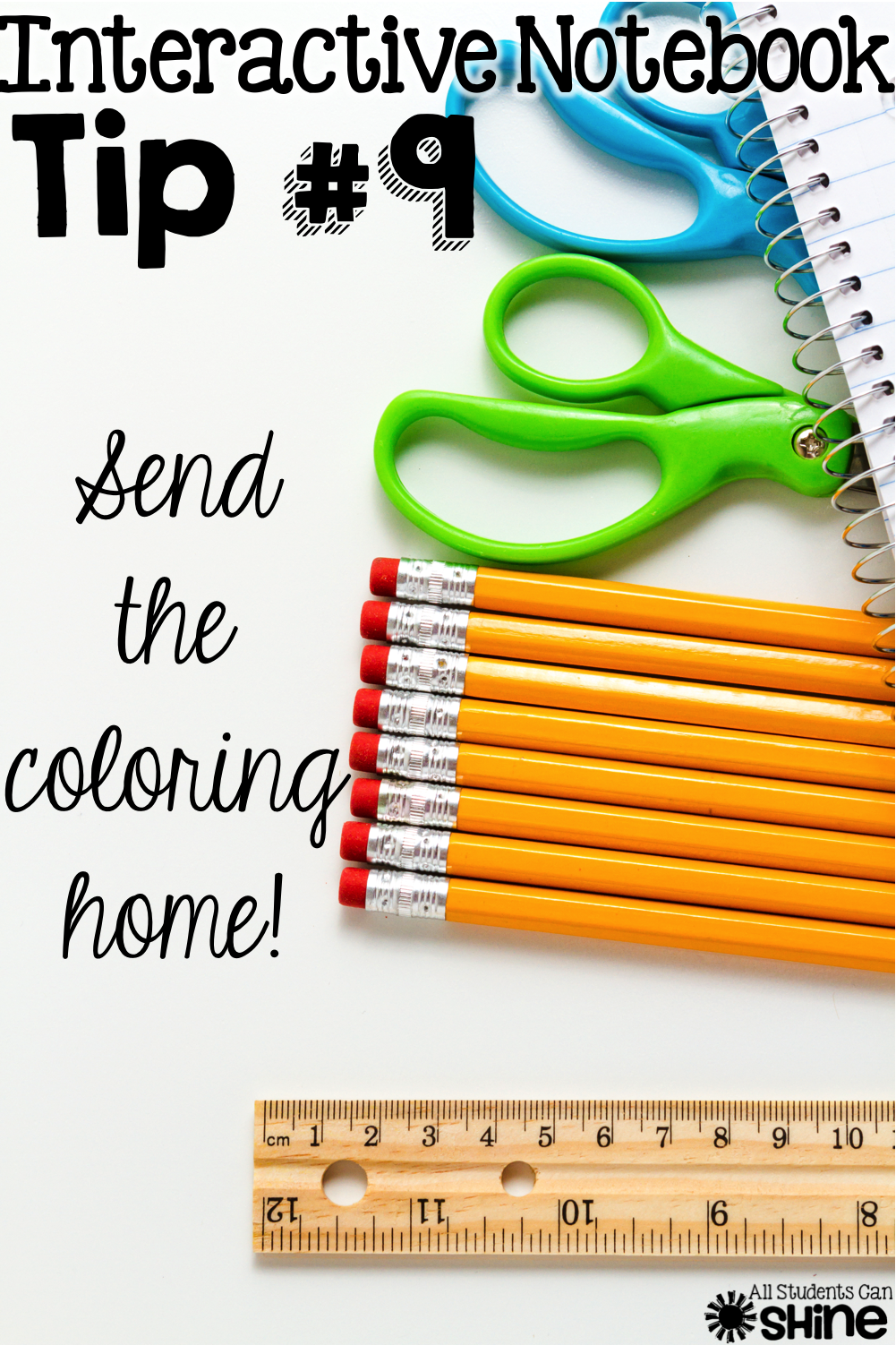I started using interactive notebooks in my classroom last year and I absolutely LOVED it. However, I wish I could have had a few tips before getting started! I would have avoided a few wrong turns along the way. That being said, I will share with you my top 10 tips for implementing notebooks in your classroom. If you haven’t given interactive notebooks a try yet, or if you would like to perfect your use of interactive notebooks, this post is for you!
Interactive Notebooks (INB) are your students’ “go to” resource, where they can refer back to any concepts that have been taught in class. It’s a more interactive way to take notes!
As the year goes on, students add pages to their notebook and refer back to them when studying or when they need to review a concept and/or skill. They are basically building their own textbook as the year progresses.
INB are a great tool for teachers too!
They help us reflect on both our students’ learning styles and our own teaching and planning. They are a great way to analyze our students’ understanding of new concepts. In turn, we can use the knowledge that we gain from the INB to create, plan, and manage our small group instruction. We can also use this information to make accommodations and modifications for all students, not only those on individual learning plans. Observation during the INB process is a great time to take notes on students’ learning, questions that may arise, and skills that they may be struggling with. This helps with further planning and teaching.
How Much Time Does It Take?
That really depends on you, your class, and how much time you are willing to put into this. Start small and go from there. The more you students get familiar with using their notebooks, the easier it will get and the faster they will be with the cutting and gluing. If you spend lots of time teaching them the rules and procedures at the beginning of the year, the better they will be at it down the line.
What Do I Need To Get Started?
All you need is a simple copy book for each student! There are plenty of interactive notebooks available online. Just do a quick search on the web, or on Teachers Pay Teachers, and you are sure to find what you need!
My Top 10 Tips for Interactive Notebooks

Each time your students add a page to their notebooks, have them write the page number in the bottom corner. They will be able to write page numbers next to each title in their table of contents, which will be helpful when they are looking for a particular page.
Make easy bookmarks by sticking a piece of yarn or string to the back of the notebook. Students can use this bookmark to avoid looking for pages when they are starting a new project, or when they are reading their notebook.
When your students are working on a new project, always display a model for your students to refer to. This will avoid many questions and will give you more time to concentrate on helping kids with the skill or concept, rather than the layout of the page.
When it comes to glue, it really up to you!
Some teacher prefer roll on glue because it isn’t as messy as white glue.
It may not be as sticky and you may have pieces that fall out in the long run…
The best solution I have found is sponge glue. You can find a tutorial on how to make these over at The Kindergarten Smorgasboard.
Mr. Greg will show you how it’s done 😉
Encourage your students to keep all their scrap papers
at their desk until they are finished
with their notebook page.
This will help you avoid “trash tears” and disappearing papers!
I have found that my students often struggle
with keeping their writing behind the flaps,
especially if the pieces are a little small.
In order to help them fix this problem,
I show them how to trace a line around the flap.
This way, they create a border for their writing
and can easily fit their writing inside the lines.
It makes for a better looking page 😉

Keep a pocket at the front
of every student’s notebook.
If they are not finished with an activity,
they will have a place to store their extra pieces!
If you don’t want to use your class time for the coloring, no problem! Just send it home. It’s nice for our students to have a nicely colored and decorate page, but that is not the point of interactive notebooks. The most important thing is that your students are learning and creating a book that they will use as a reference.
Personally, I like to let my students color their page because they become proud of their notebooks when they have worked hard to make it their own. However, if we run out of class time, I either send home the coloring or allow them to grab their notebooks during their free time (ex: early finishers).

Lastly, make sure your students are
proud of their work!
That’s what is most important!
If your students create something
that they are proud of,
they will be more likely to use it
as their “go to” resource!













